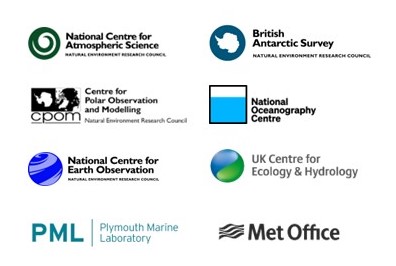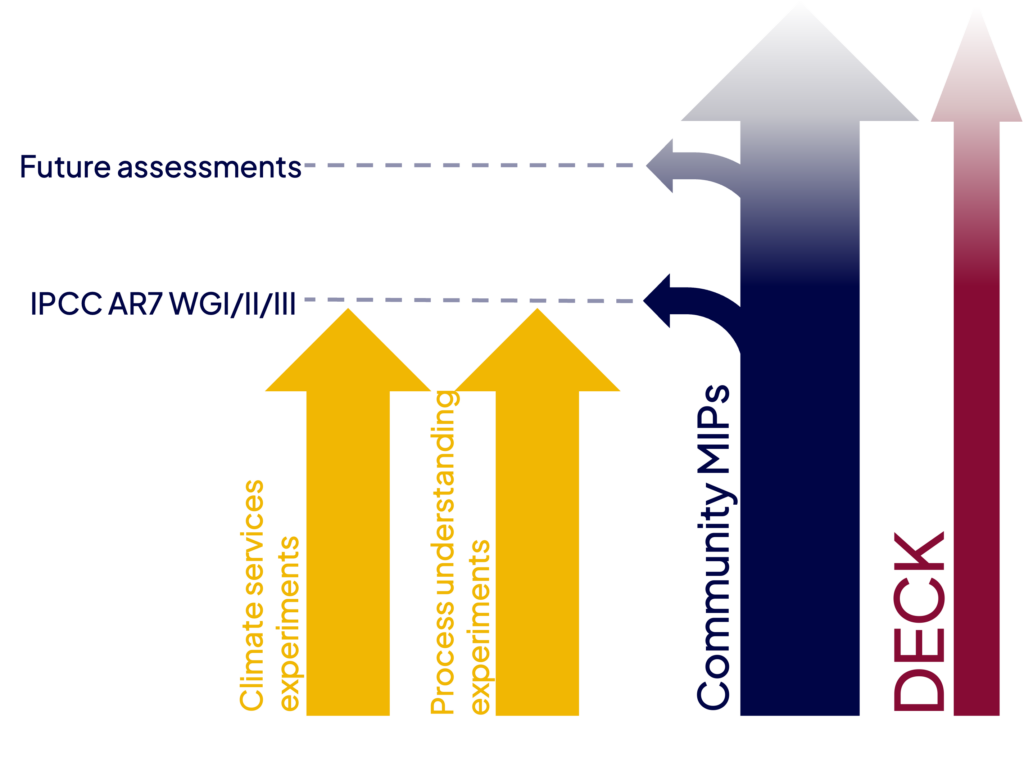Science of UKESM

The UKESM team develops, applies and analyses UK Earth system models as part of a UK National Capability in climate and Earth system science.
Climate change is one of the greatest threats facing humanity today. Reliable estimates of future climate change are a central component of informed decision-making, both for avoiding the worst outcomes of climate change and for developing informed adaptation plans to unavoidable change. At the heart of such estimates are state-of-the-art Global Climate and Earth system models.
The UKESM develops the UK’s national capability in Earth system modelling, developing tools both to deliver robust estimates of future change and for use in cutting edge research. To realize this, the team brings together scientists with a diverse range of expertise, spanning atmospheric physics, marine and terrestrial biogeochemistry, ice sheet modelling and computer science. Scientists from seven NERC research centres and the Met Office Hadley Centre contribute to UKESM.
Our achievements
In the past 5 years years we have:
- Developed and released the first version of the UK Earth system model (UKESM1) in February 2019
- Run a full set of CMIP6 simulations (contributing to the IPCC AR6)
- Contributed to the development and release of the ESMValTool evaluation software.
- Developed an improved model configuration UKESM1.1
UKESM1 (Sellar 2019) is a state-of-the-art Earth system model that consists of the following component models:
- The physical global climate model HadGEM3-GC3.1 (Williams 2018, Kuhlbrodt 2019), itself composed of the Unified Model atmosphere, NEMO ocean model and CICE sea ice model.
- Atmospheric Chemistry: UKCA interactive stratospheric-tropospheric chemistry model (Morgenstern 2009, O’Connor 2014, Archibald 2019).
- Atmospheric aerosols: UKCA-GLOMAP-mode stratosphere-tropospheric aerosol scheme (Mann 2014, Mulcahy 2020).
- Ocean biogeochemistry: MEDUSA2 intermediate complexity plankton ecosystem model Yool 2013).
- Terrestrial biogeochemistry: TRIFFID vegetation dynamics prognostic soil and vegetation carbon with nitrogen limitation (Clark 2011, Wiltshire 2020)
- Ice sheets: BISICLES land ice sheets for Antarctica & Greenland (Cornforth 2013, Smith 2020).Model components are coupled together using the OASIS3-MCT coupler (Craig 2017)
Publications
You will find our latest publications here

Using UKESM1 outputs
The CMIP Phase 6 (CMIP6) – The World Climate Research Programme (WCRP) initiated a series of Coupled Model Intercomparison Projects (CMIP) to quantitatively evaluate Earth System Models.
CMIP6 contributed to the IPCC Sixth Assessment. Background information on CMIP6
CMIP6 was an important application of UKESM models. CMIP6 improved our understanding of, and ability to simulate, key climate phenomena and future climate change using a coordinated multi-model approach. In CMIP6, UKESM1 and other climate models from around the world were integrated using a common set of experiment protocols to address a range of key science questions.
UKESM1 CMIP6 data sets are available from the Earth System Grid Federation (ESGF) and then give a link to the CEDA ESGF : https://esgf-index1.ceda.ac.uk/projects/cmip6-ceda/
The scientific documentation for UKESM1 and its physical model HadGEM3-GC31 is available in the Common Information Model (CIM) metadata format at CMIP ES Documentation and also via the ES-DOC portal.
Licensing of Met Office, NERC and NIWA CMIP6 data sets out the terms of use of this data.
UKESM coordinated a series of seminars on CMIP6 in the UK to bring together scientists working on the analysis of CMIP6 simulations to present and discuss their work. A 1 day workshop was held in February 2019 at Oxford to inform the community on progress with CMIP6 simulations and begin discussions about the analysis of CMIP6 data.

CMIP7 is currently in discussion and the timeline is yet to be determined. Further details are available on the WCRP CMIP web site. UKESM is involved in discussing the UK’s plans with regards to participating in CMIP7.